Abstract
1. In the isolated vascularly-perfused stomach of the rat, gastrin 1-17 (520 pmol 1(-1)) increased acid output from basal values of 13.7 +/- 2.7 to 92.5 +/- 11.4 mumol h-1 and venous histamine output from 10.1 +/- 2.3 to 54.7 +/- 7.9 nmol h-1 (mean +/- s.e.mean). 2. The H1 receptor agonist 2-methylhistamine (10 mumol 1(-1)) increased acid output to 21.6 +/- 2.9 mumol h-1 (P less than 0.05) and reduced basal histamine output to 4.0 +/- 0.8 nmol h-1 (P less than 0.05). Gastrin-stimulated acid secretion and vascular histamine output was not significantly affected by 2-methylhistamine (10 mumol 1(-1)). 3. The H2 receptor agonist, impromidine, dose-dependently increased basal acid secretion, reaching a maximal value of 145.5 +/- 11.7 mumol h-1 with impromidine (10 mumol 1(-1)), and maximal gastrin-stimulated acid secretion to 167.4 +/- 15.1 mumol h-1 with impromidine (10 mumol 1(-1)). Impromidine dose-dependently inhibited basal and gastrin-stimulated vascular histamine output. 4. The H3 receptor agonist R-a-methylhistamine, (1 and 10 mumol 1(-1)) minimally increased basal acid secretion. R-a-methylhistamine (10 mumol 1(-1)) did not significantly affect maximal gastrin-stimulated acid secretion. Basal and gastrin-stimulated vascular histamine outputs decreased to 4.0 +/- 0.8 (P less than 0.05) and 24.7 +/- 4.7 nmol h-1 (P = 0.05) with R-a-methylhistamine (10 mumol 1(-1)). 5. The H2 receptor antagonist ranitidine (2 mumol 1(-1)) did not inhibit basal acid secretion, but acid outputs with gastrin and all histamine agonists were reduced.(ABSTRACT TRUNCATED AT 250 WORDS)
Full text
PDF
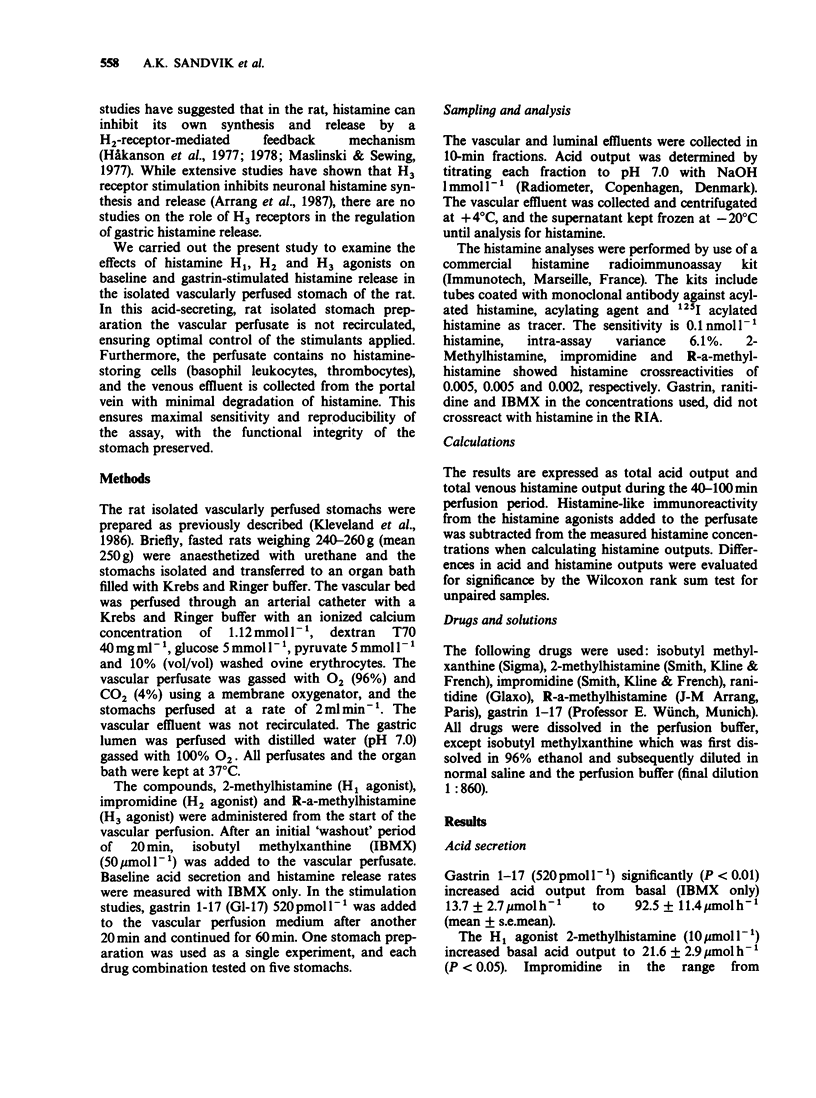
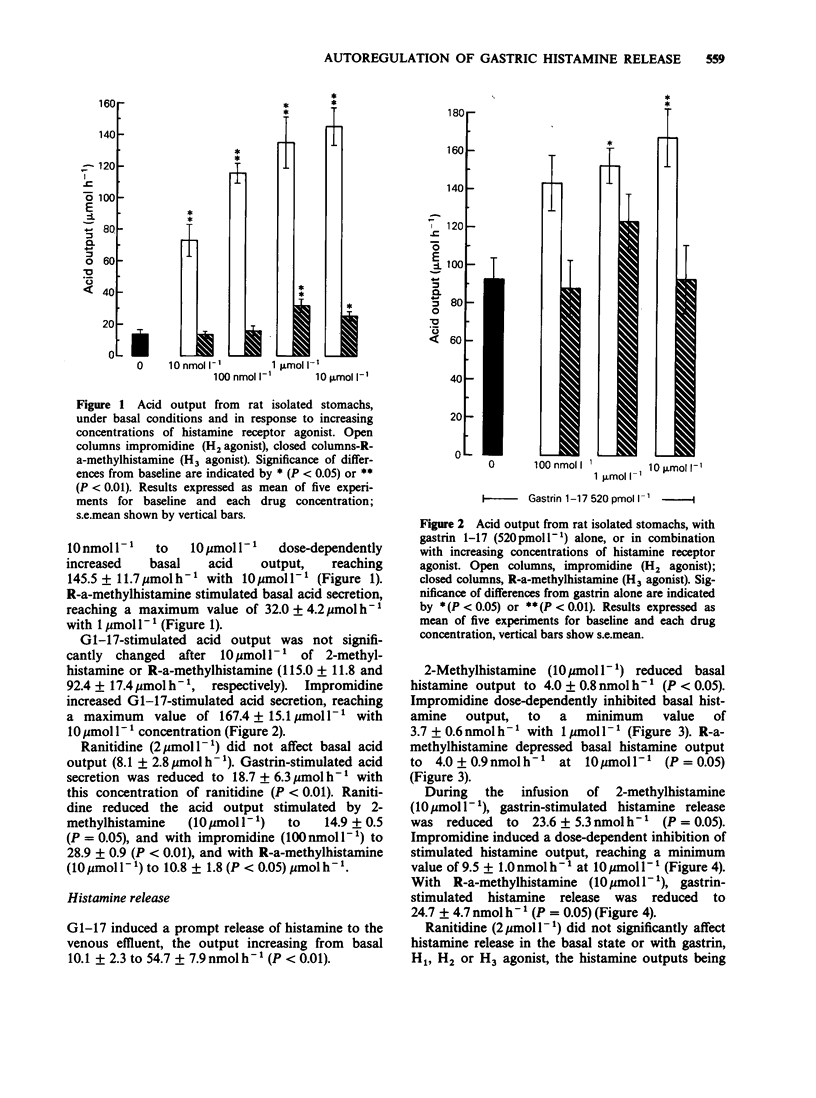
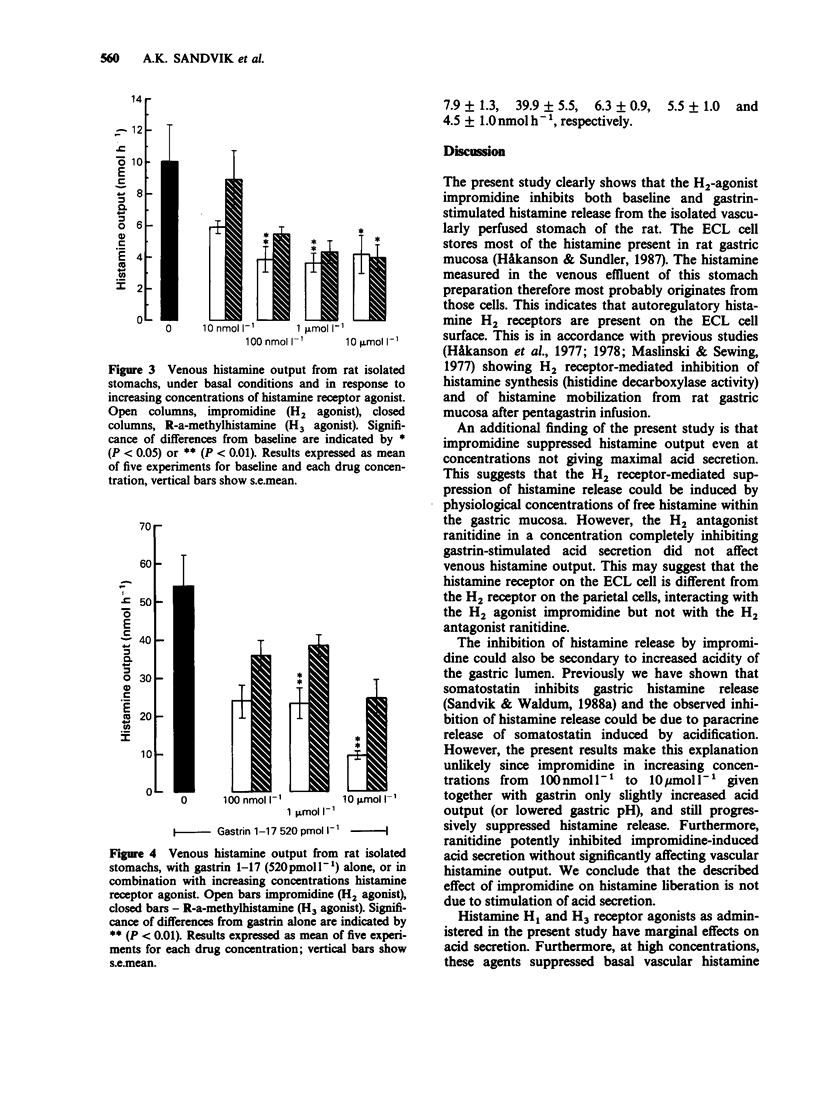
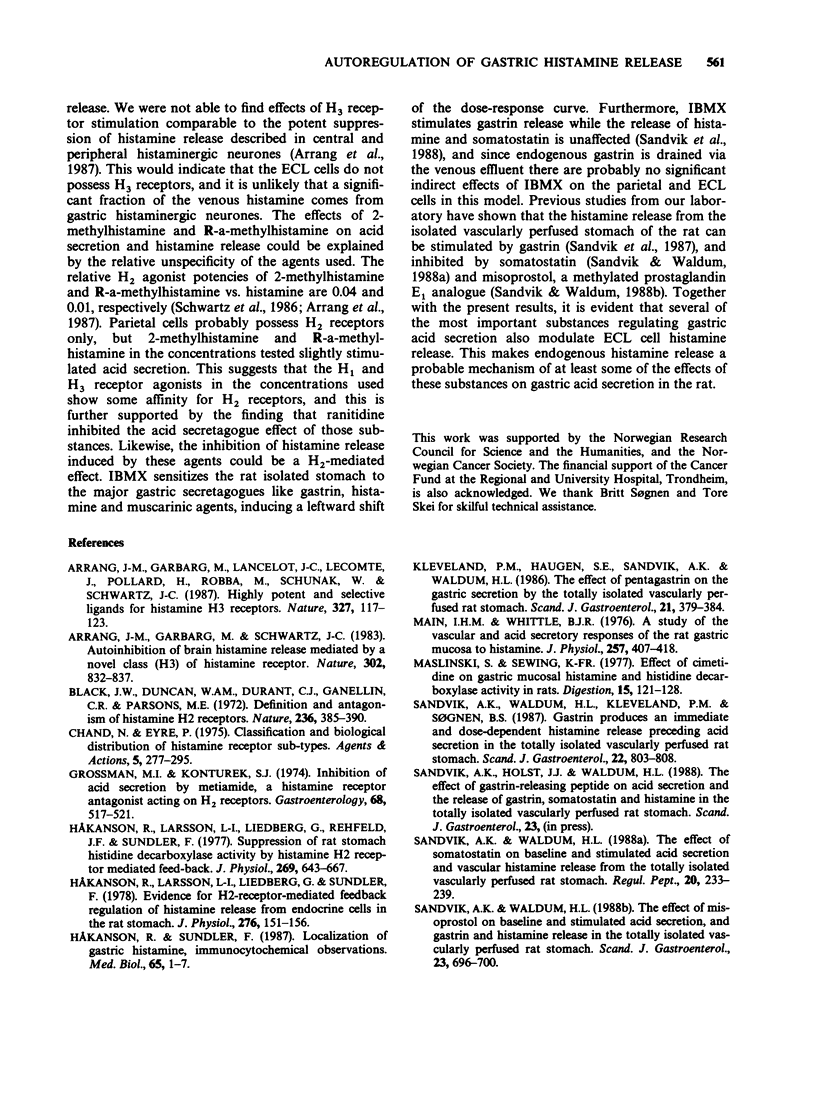
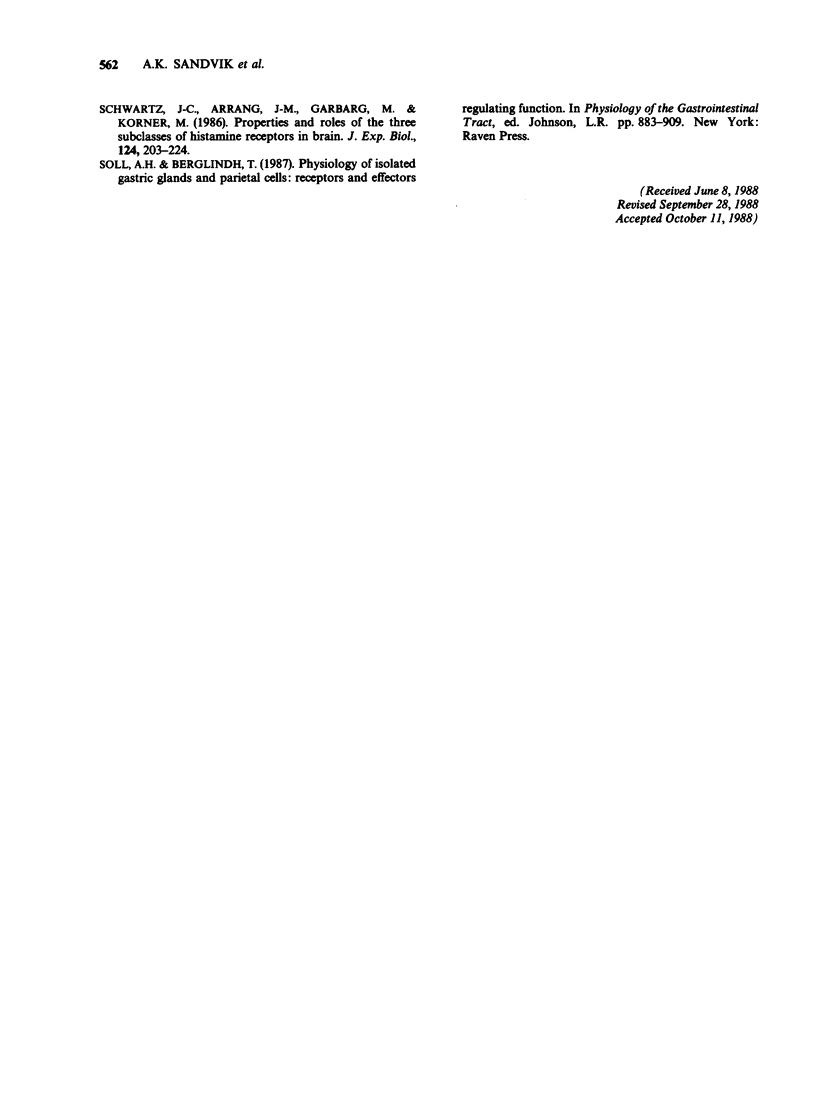
Selected References
These references are in PubMed. This may not be the complete list of references from this article.
- Arrang J. M., Garbarg M., Lancelot J. C., Lecomte J. M., Pollard H., Robba M., Schunack W., Schwartz J. C. Highly potent and selective ligands for histamine H3-receptors. Nature. 1987 May 14;327(6118):117–123. doi: 10.1038/327117a0. [DOI] [PubMed] [Google Scholar]
- Arrang J. M., Garbarg M., Schwartz J. C. Auto-inhibition of brain histamine release mediated by a novel class (H3) of histamine receptor. Nature. 1983 Apr 28;302(5911):832–837. doi: 10.1038/302832a0. [DOI] [PubMed] [Google Scholar]
- Black J. W., Duncan W. A., Durant C. J., Ganellin C. R., Parsons E. M. Definition and antagonism of histamine H 2 -receptors. Nature. 1972 Apr 21;236(5347):385–390. doi: 10.1038/236385a0. [DOI] [PubMed] [Google Scholar]
- Chand N., Eyre P. Classification and biological distribution of histamine receptor sub-types. Agents Actions. 1975 Oct;5(4):277–295. doi: 10.1007/BF02205232. [DOI] [PubMed] [Google Scholar]
- Grossman M. I., Konturek S. J. Inhibition of acid secretion in dog by metiamide, a histamine antagonist acting on H2 receptors. Gastroenterology. 1974 Apr;66(4):517–521. [PubMed] [Google Scholar]
- Håkanson R., Larsson L. I., Liedberg G., Rehfeld J. F., Sundler F. Suppression of rat stomach histidine decarboxylase activity by histamine: H2-receptor-mediated feed-back. J Physiol. 1977 Aug;269(3):643–667. doi: 10.1113/jphysiol.1977.sp011920. [DOI] [PMC free article] [PubMed] [Google Scholar]
- Håkanson R., Larsson L. I., Liedberg G., Sundler F. Evidence for H2-receptor-mediated feed-back regulation of histamine release from endocrine cells in the rat stomach. J Physiol. 1978 Mar;276:151–157. doi: 10.1113/jphysiol.1978.sp012224. [DOI] [PMC free article] [PubMed] [Google Scholar]
- Håkanson R., Sundler F. Localisation of gastric histamine: immunocytochemical observations. Med Biol. 1987;65(1):1–7. [PubMed] [Google Scholar]
- Kleveland P. M., Haugen S. E., Sandvik S., Waldum H. L. The effect of pentagastrin on the gastric secretion by the totally isolated vascularly perfused rat stomach. Scand J Gastroenterol. 1986 Apr;21(3):379–384. doi: 10.3109/00365528609003091. [DOI] [PubMed] [Google Scholar]
- Main I. H., Whittle B. J. A study of the vascular and acid-secretory responses of the rat gastric mucosa to histamine. J Physiol. 1976 May;257(2):407–418. doi: 10.1113/jphysiol.1976.sp011375. [DOI] [PMC free article] [PubMed] [Google Scholar]
- Masliński S., Sewing K. F. Effect of cimetidine on gastric mucosal histamine and histidine decarboxylase activity in rats. Digestion. 1977 Feb;15(2):121–128. doi: 10.1159/000197993. [DOI] [PubMed] [Google Scholar]
- Sandvik A. K., Waldum H. L., Kleveland P. M., Schulze Søgnen B. Gastrin produces an immediate and dose-dependent histamine release preceding acid secretion in the totally isolated, vascularly perfused rat stomach. Scand J Gastroenterol. 1987 Sep;22(7):803–808. doi: 10.3109/00365528708991918. [DOI] [PubMed] [Google Scholar]
- Sandvik A. K., Waldum H. L. The effect of misoprostol on base-line and stimulated acid secretion and on gastrin and histamine release in the totally isolated, vascularly perfused rat stomach. Scand J Gastroenterol. 1988 Aug;23(6):696–700. doi: 10.3109/00365528809093935. [DOI] [PubMed] [Google Scholar]
- Sandvik A. K., Waldum H. L. The effect of somatostatin on baseline and stimulated acid secretion and vascular histamine release from the totally isolated vascularly perfused rat stomach. Regul Pept. 1988 Mar;20(3):233–239. doi: 10.1016/0167-0115(88)90079-1. [DOI] [PubMed] [Google Scholar]
- Schwartz J. C., Arrang J. M., Garbarg M., Korner M. Properties and roles of the three subclasses of histamine receptors in brain. J Exp Biol. 1986 Sep;124:203–224. doi: 10.1242/jeb.124.1.203. [DOI] [PubMed] [Google Scholar]


